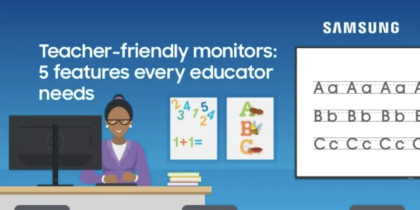As schools look for ways to integrate coding into K–12 curriculum, they need to find tools that make the process approachable but also provide the power to create great apps. One such tool is MIT’s App Inventor, which can be used to create apps that run on any Android tablet or smartphone.
Why Teach Students to Code?
Computer science uses an iterative process to solve problems creatively. This approach can benefit students in particular, teaching them to “learn on their own how to become adaptable,” said Josh Sheldon, former middle and high school teacher and current member of the App Inventor team.
Whether or not students pursue a degree or career in computer science is irrelevant. The problem-solving skills that come from app development will serve them well in any subject area, as well as in life after school. These will help students adapt to new ways of working and new technologies that help do work.
How Does App Inventor Work?
App Inventor uses a block-based programming environment that is accessible to people at all levels, from novice to advanced programmer. It’s open source, which means it is available at no cost. Additionally, it’s web-based, so students can program from the browser of any device, including affordable but powerful Samsung Chromebooks that are popular in many schools.
The team at MIT said an App Inventor novice can create a simple app in about an hour, which provides the type of quick win that can build engagement as students move into more complicated projects. It also means that teachers can integrate the platform into any content area. It doesn’t require knowledge of any specific programming language.
What Can Students Create?
The possibilities are really limitless. There a lot of great examples of student-created apps that help teach peers, solve community issues and even provide support for students with disabilities. For example, to conclude a science unit on water, seventh-graders in Deerfield, New Hampshire, created apps to model various concepts from their study. Similarly, a group of sixth-graders in West Fargo, North Dakota, created an app to encourage recycling in their community by helping users find recycling locations and setting reminders. The latter project won a 2013 Verizon Innovative App Challenge award.
To aid peers, students in Los Fresnos, Texas, wrote an app to help support visually impaired students in their school. Their program, which was an indoor navigation tool incorporating compasses, optical Braille readers and voice over technology, won one of the 2014 Verizon Innovative App awards and secured three of the team members an invitation to the White House Science Fair. Students can also create apps to stay connected with parents, too. One 12-year-old in India wrote an app that helps keep students and parents connected while children are riding the bus. The impetus for creating this app came from a time when the student’s parents worried that his school bus was delayed arriving home. Tutorials and curriculum integration resources on the App Inventor site help teachers and students use the tool, while a gallery of apps provides inspiration for future creations.







